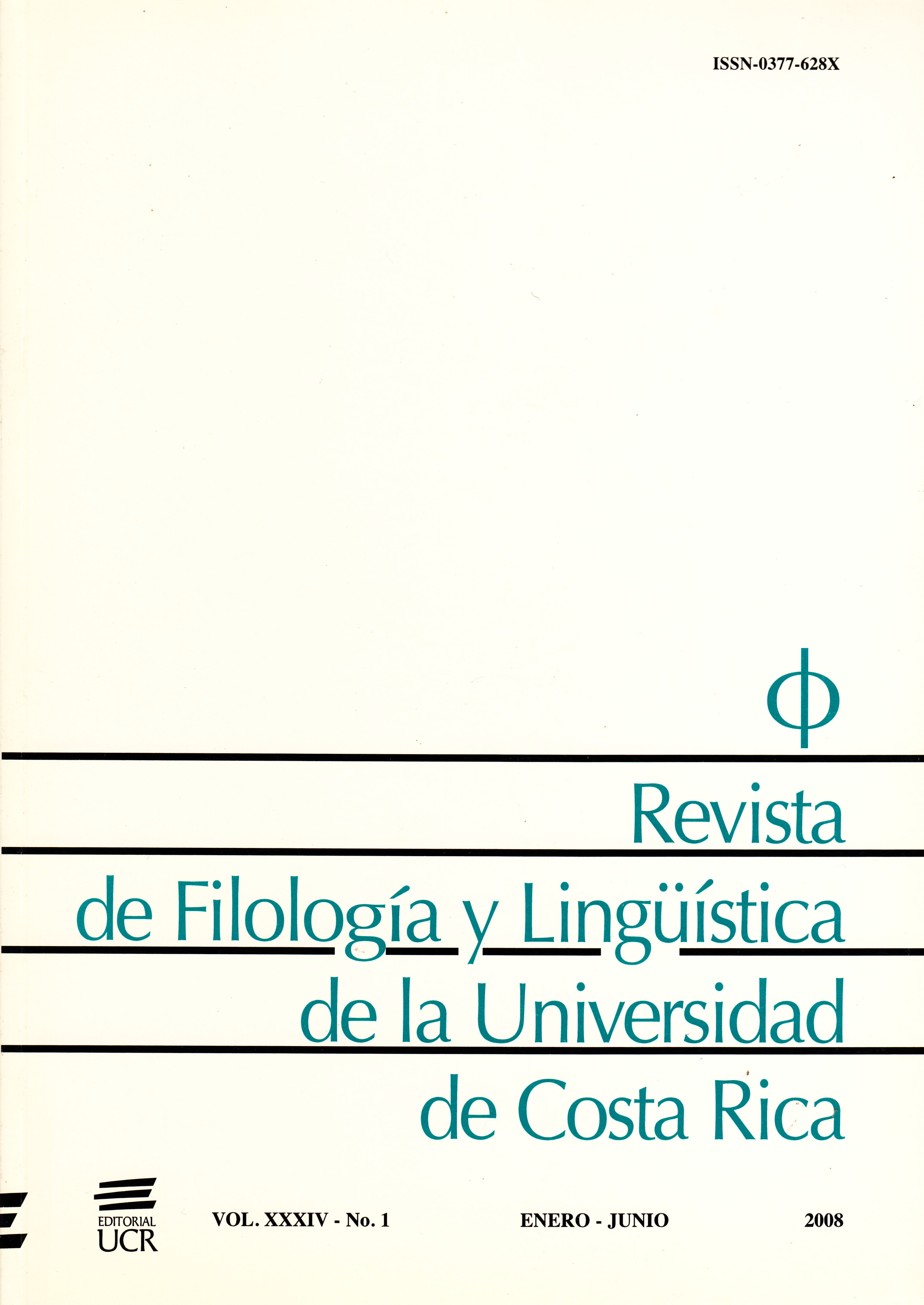Abstract
One of the basic conditions required for university students to study a subject, using only books written in a foreign language, is that they have an acceptable level of reading. Nevertheless, we have tried to prove that having such a level is not enough and that students need an extra tool: a glossary of the specific terms used in the study area. This paper begins by giving a brief outline of the research carried out into how foreign language students reach an acceptable level of Reading. Then we present a case study made with students of Physical Oceanography at the University of Las Palmas de Gran Canaria (Spain), in which we try to prove the advantages of using a glossary of specific terms.References
Alderson, J.C. y A.H. Urquhart (eds.). 1984. Reading in a foreign language. New York: Longman.
Barnett, M. 1986. “Syntactic and lexical/semantical skill in foreign language reading: importance and interaction”. Modern Language Journal. 70: 343- 349.
Barr, R. et al. 1996. Handbook of reading research. New York: Longman.
Bauer, L. y P. Nation. 1995. “Word families”. International Journal of Lexicography. 6 (4): 253-279.
Bauman, J. y B. Culligan. 1995. General Service List. http://jbauman/gsl.html.
Berman, R. 1984. Syntactic components of the foreign language reading process. En: Alderson y Urquhar (eds.), 139- 156.
Bernhardt, E.B. y M. Kamil. 1995. “Interpreting relationships between L1 and L2 reading: consolidating the linguistic threshold and the linguistic interdependence hypotheses”. Applied Linguistics. 16: 15- 34.
Block, E. 1986. “The comprehension strategies of second language readers”. Tesol Quarterly. 20: 463- 494.
Block, E. 1992. “See how they read: comprehension monitoring of L1 and L2 readers”. Tesol Quarterly. 26: 319- 343.
Carrell, P.L. 1991. “Second language reading: reading ability or language proficiency?” Applied Linguistics. 12: 159- 179.
Clarke, M. 1980. “The short circuit hypothesis of ESL reading or when language competence interferes with reading performance”. Modern Language Journal. 64: 203- 209.
Cooper, M. 1984. “Linguistic competence of practiced and unpractised non-native readers in English”. En: Alderson y Urquhar (eds.), 122- 138.
Cornaire, C. 1999. Le point sur la lecture. París: CLE International.
Coxhead, A. 2000. “A new academic wordlist”. Tesol Quarterly. 34: 213, 238.
Crow, J. y R. Quigley. 1985. “A semantic field approach to passive vocabulary acquisition for reading comprehension”. Tesol Quarterly. 19: 497- 513.
Cummins, J. 1980. “The cross-lingual dimensions of language proficiency: implications for bilingual education and the optimal age issue”. Tesol Quarterly. 14: 175- 187.
Daneman, M. 1996. Individual differences in reading skills. En: Barr et al. (eds.), 512- 538.
Hee Ko, M. 2005. “Glosses, comprehension, and strategy use”. Reading in a Foreign Language. 17: 125- 143.
Hu Hsueh-Chao, M. y P. Nation. 2000. “Unknown vocabularydensity and reading comprehension”. Reading in a Foreign Language. 13: 403- 430.
Huntley, S. y M. Peñate. 2003. “Specific reading at an advanced level: linguistic or strategic competence?”. Ibérica (Revista de la Asociación Europea de Lenguas para Fines específicos). 5: 87- 100.
Rayner, K. y A. Pollatsek. 1989. The Psychology of Reading. Englewood Cliffs, NJ: Prentice Hall.
Rodríguez, A. y M. Peñate. 2008. “La investigación de los procesos lectores: tendencias y enfoques en la lectura general y específica”. Revista de Lenguas para Fines Específicos. 13- 14: 241- 284.
Segalowitz, D. 1991. “Does advanced skill in a second language reduce automaticity in the first language?” Language Learning. 41: 59- 83.
Stanovich, K. 1986. “Matthew effects in reading: some consequences of individual differences in the acquisition of literacy”. Reading Research Quarterly. 21: 360- 407.
Upton, T.A. 1997. “First and second language use in reading comprehension strategies of Japanese ESL students.” Teaching English as a Second or Foreign Language. 3: 1- 24.
Ward, A. 2000. Preparation PET and Practice. Oxford: Oxford University Press.
Ward, J. 1999. “How large a vocabulary do EAP Engineering students need?” Reading in a Foreign Language. 12: 309- 323.
West, M. 1953. A General Service List of English Words. London: Longman.
Williams, R. y D. Dallas. 1984. Aspects of vocabulary in the readability of content area L2 educational textbooks: a case study. En: Alderson y Urquhar (eds.), 199- 212

